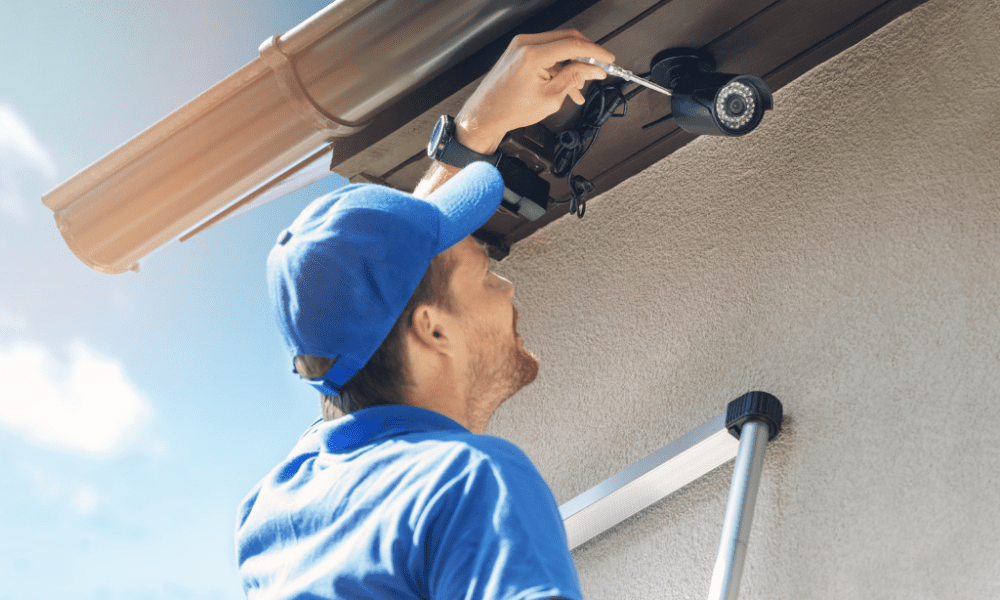How Do IP Security Cameras Work, and What Features Do They Offer?

In an era where security is more crucial than ever, IP security cameras have emerged as a pivotal technology in the surveillance and protection of personal and commercial properties. These cameras, which harness the power of the Internet Protocol to transmit and receive data, have revolutionized the way we monitor environments—making surveillance more flexible, accessible, and detailed than traditional systems. As a leading provider in security solutions, CSS Tech has been at the forefront of integrating advanced IP security technologies into its offerings, ensuring that its clients benefit from the latest advancements in surveillance technology. This article explores how IP security cameras work, the extensive features they offer, and why they are increasingly indispensable in modern security setups championed by innovators.
IP, or Internet Protocol cameras, are a type of digital video camera that receive control data and send image data via the Internet. Unlike their analog counterparts, which transmit data to a DVR via coaxial cables, IP cameras connect to a networked server, either wirelessly or through Ethernet cables. This fundamental difference not only enhances the quality of the video output but also expands the scope and functionality of a surveillance system.
Core Mechanisms
The core of an IP camera’s functionality lies in its ability to convert images and audio into data, which is then transmitted over a network. This process begins with the camera’s sensor capturing light and converting it into a digital signal. This signal is processed within the camera’s onboard encoder, which compresses the data to ensure efficient transmission over the network without significant loss of quality.
Once the data is compressed, it is transmitted via the network to a server or cloud storage, where it can be viewed in real-time or stored for future review. The ability to send and receive data over the Internet means that IP cameras can be accessed and controlled remotely, allowing users to monitor their cameras from anywhere in the world via computers, smartphones, or tablets.
Key Features of IP Security Cameras
IP security cameras are distinguished by their rich set of features designed to meet various security needs. Here’s a look at some of the most significant features:
High-Resolution Video
Modern IP cameras offer significantly higher resolution compared to traditional analog systems. Resolutions of 1080p and higher are common, providing crisp, clear images that allow for finer details to be seen, which is crucial for identifying faces or license plates.
Night Vision
To ensure around-the-clock surveillance, many IP cameras are equipped with night vision capabilities. This is typically achieved through infrared (IR) LEDs that illuminate the camera’s field of view in low light conditions, allowing for clear video footage even in complete darkness.
Motion Detection
Motion detection is a pivotal feature in IP cameras, enabling the system to alert users or start recording when movement is detected within its field of vision. This feature not only enhances the efficiency of the surveillance system by focusing on moments of activity but also helps in conserving storage space and managing bandwidth.
Two-Way Audio
Incorporating microphones and speakers, some IP cameras offer two-way audio that enables users to listen in on the camera’s environment and even communicate through the camera. This feature is particularly useful for scenarios like entrance monitoring or remote instructions to delivery personnel.
Pan, Tilt, and Zoom (PTZ)
PTZ capabilities allow the camera to be remotely controlled to pan (move horizontally), tilt (move vertically), or zoom in on specific areas for a closer look. This flexibility makes PTZ-equipped IP cameras ideal for monitoring large areas where manual adjustment is impractical.
Weatherproofing
Outdoor surveillance requires cameras that can withstand environmental elements. Many IP cameras are designed with robust casings that are weather-resistant, ensuring reliable performance under varying conditions like rain, dust, and extreme temperatures.
Connectivity and Integration
One of the strengths of IP cameras is their ability to integrate with other devices and platforms. Most IP cameras support Power over Ethernet (PoE), which simplifies wiring and installation by allowing both power and data to be carried over a single cable. Furthermore, IP cameras can often be integrated into a broader smart home or enterprise IoT system, enabling automated responses and interactions with other devices such as door locks and lighting systems.
Privacy and Security Concerns
While IP cameras offer numerous benefits, they also raise important privacy and security concerns. The very connectivity that makes them so versatile also exposes them to potential hacking. To mitigate these risks, it’s crucial to employ strong encryption, secure network practices, and regular firmware updates.
Conclusion
IP security cameras represent a significant advancement in surveillance technology, offering high-quality video, remote accessibility, and a suite of advanced features. As the technology continues to evolve, the potential applications and effectiveness of IP cameras are bound to expand, making them indispensable tools in the quest for enhanced security and surveillance. Whether for home security or complex commercial systems, IP cameras provide a versatile and powerful solution to meet the growing demands of modern surveillance.





